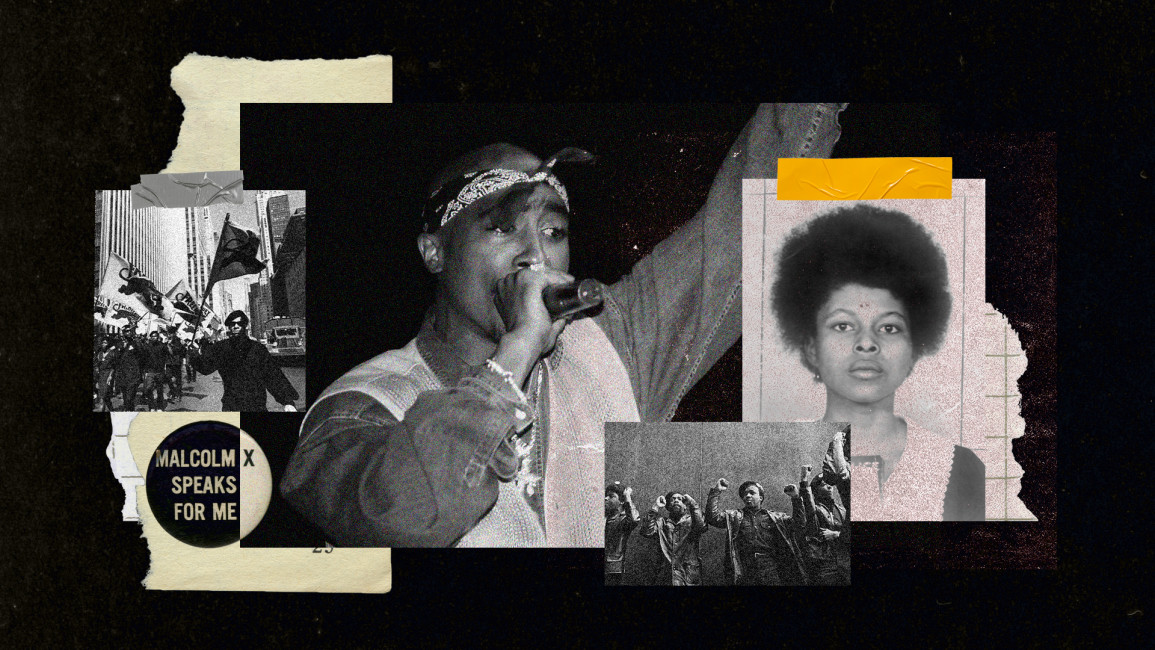
No changes, just racist faces: Why Tupac's rap about the condition of black people in the US is still relevant
Greatness is often a once in a generation, or even lifetime phenomenon. Very few fall into the category. Recently, the late great Tupac Shakur would have celebrated his 52nd birthday. For many around the world, Shakur is not simply one of the best rappers of all time, but hands down the greatest of all time.
I’d even go as far as arguing that there has been none who could compare since Tupac’s death in 1996 at the young age of 25. Some may consider this statement to be bold, but the reasons are simple.
Rap at its core and in its purest essence is about story-telling, and Tupac was a master of this craft. His lyricism had a depth and combined gangster style - born in the US’ West Coast - with the politically charged tone set by the likes of Hip Hop group Public Enemy.
''Tupac was politically minded by virtue of who he was and at the time of his death, had deliberately channelled the energy of progressive movements, radical thought and consciousness into his music.''
Born in New York in the 1970s’ – the beating heart of Hip Hop – Tupac came of age during rap’s golden era of the 1990s. His early projects like 2pacalypse now, reflected the harsh realities for black Americans.
Many of his tracks were ground-breaking. For example, Dear Mama, which was an affectionate tribute to his mother Afeni Shakur, set the tone for many other rappers to follow. Tupac made it acceptable to express love and vulnerability as a man, in a landscape often dominated by violence while still maintaining street credibility.
While Tupac’s voice was unique, his subject matter was unrivalled. The rawness in his voice matches the cold and unforgiving pictures he paints.
Pain, from the soundtrack to Above the Rim (1994), a movie in which he starred, deals with the harsh inner city environment for a young black man trying to navigate and survive a place fraught with danger and violence. Hearing Tupac dissect these realities speaks to his early politicisation and understanding of the origins of the plight of black inner city youth in America.
He wanted the cycle of gang violence stopped and wanted to redirect the energy to clean up neighbourhoods and to provide a safer and healthier environment for young black youth. And, soon after his release from prison, he spoke of setting up a summer league for boys and girls, to be supported by rappers, and talked about plans to regulate gang activity and for community reinvestment.
Indeed, Tupac was set apart from the rest of his contemporaries by his natural intelligence and charisma which was demonstrated in his interviews. In one example, Tupac broke down the American social order and problem with the capitalist system in such a way that it was fully relatable to others from his generation:
“There’s too much money here. I mean nobody should be hitting the lotto for 36 million [dollars] and we got people starving in the streets. That is not idealistic, that’s just real. That is stupid. There’s no way Michael Jackson should have, or whoever Jackson, should have a million thousand triple billion dollars and there’s people starving. There’s no way, there’s no way that these people should own planes and there are people that don’t have houses.”
A young successful black rapper doing this in 1993, with a critique that remains relevant 30 years later, is almost unheard of.
He also didn’t compromise when it came to telling the truth as he saw it. During another interview in 1992, Tupac explained that he had no intention of watering down his message to make his music more palatable to white audiences:
“I wanna see the true picture. You know what I’m saying? I don’t care if he feels uncomfortable, because what about when I felt uncomfortable for 400 years?”
But Tupac’s ability to speak truth to power was not a gimmick he practiced, but something clearly cultivated in his upbringing. He didn’t need to strive to be a politically conscious rapper, it was in his blood. He was born to be a revolutionary.
Even the name he was given at the age of one, Tupac Amaru Shakur, came from the Peruvian revolutionary who fought against Spanish occupation. Tupac’s mother, a well-respected Black Panther, wanted him to have a name which reminded him of his place and significance in a world that requires and demands constant change.
He joined the New Afrikan Panthers as a teenager and became known in high school for organising and galvanising students, advocating against gun violence, raising awareness on health issues affecting the black community, while campaigning against police violence and for the freedom of political prisoners.
Tupac was strongly influenced by important figures in his life, including his step father Mutulu Shakur, who was also a black panther - with some suggesting Tupac was harassed at school by the FBI because of this.
Another close family friend was Assata Shakur, a renowned black political activist who continues to be exiled in Cuba following murder charges related to a police officer which she always denied. She was the first woman to be the FBI’s top fugitive and remains a symbol of liberation and defiance for many of her supporters who maintain her innocence.
The young Tupac witnessed the FBI targeting of black panther members in his own family as part of the clamp down on black power movements, as well as the formation of counterintelligence programs to control any potential struggles for black self-determination.
Tupac was politically minded by virtue of who he was and at the time of his death, had deliberately channelled the energy of progressive movements, radical thought and consciousness into his music.
I believe that even at a young age, much like Fred Hampton – the young black panther leader who was assassinated aged just 21 – Tupac had a plan. Like all young people, his life was not without mistakes. But given time, he may have risen to a level of influence in the US which could have mobilised enough people to really challenge the status quo and the condition of black America which he addressed so extensively in his music.
Tupac clearly understood that in the US, music and film are two of the most powerful mediums to evoke any message and influence people. What better way for someone educated amongst black panthers to connect with the people and express the misery and suffering inflicted by oppressive, racist systems?
The fact that he’d already conquered the music industry and was on his way to taking Hollywood by storm by the time he was gunned down and killed really makes one wonder about what could have been. Nevertheless, to this day his music resonates with the downtrodden around the world.
Decades ago Tupac rapped “the penitentiary's packed and it’s filled with blacks”, it seems nothing has changed in the US today. He spoke about police violence, inequality and injustice having seen and lived the realities he was rapping about. Considering all these social issues continue to plague American society, especially poor black communities, only reinforces the continued importance of his art.
Richard Sudan is a journalist and writer specialising in anti-racism and has reported on various human rights issues from around the world. His writing has been published by The Guardian, Independent, The Voice and many others.
Follow him on Twitter: @richardsudan
Have questions or comments? Email us at: editorial-english@newarab.com
Opinions expressed in this article remain those of the author and do not necessarily represent those of The New Arab, its editorial board or staff.


